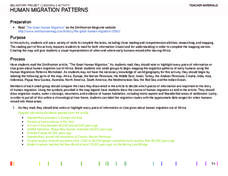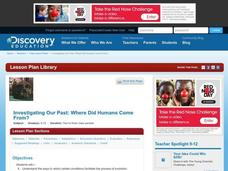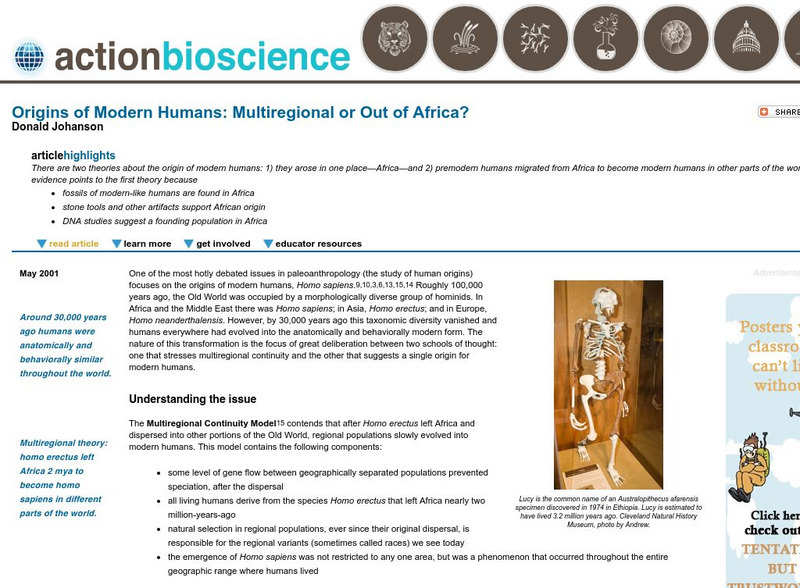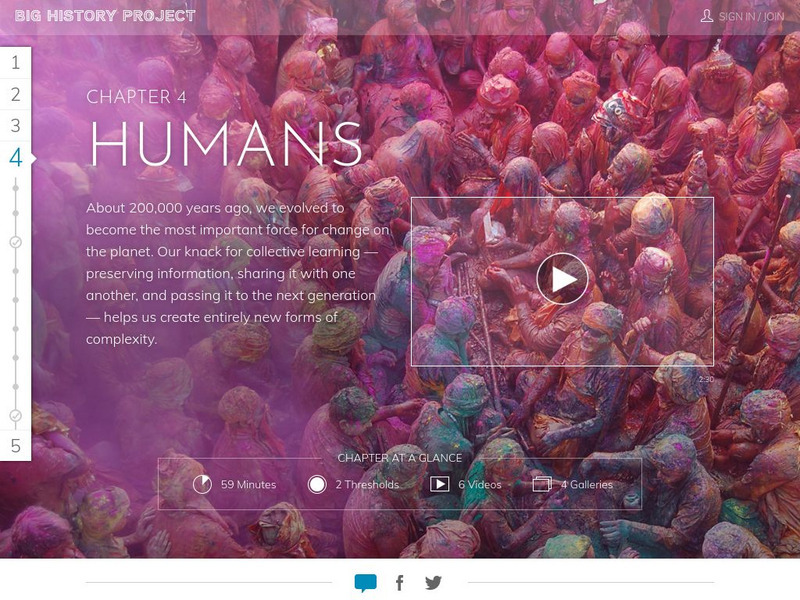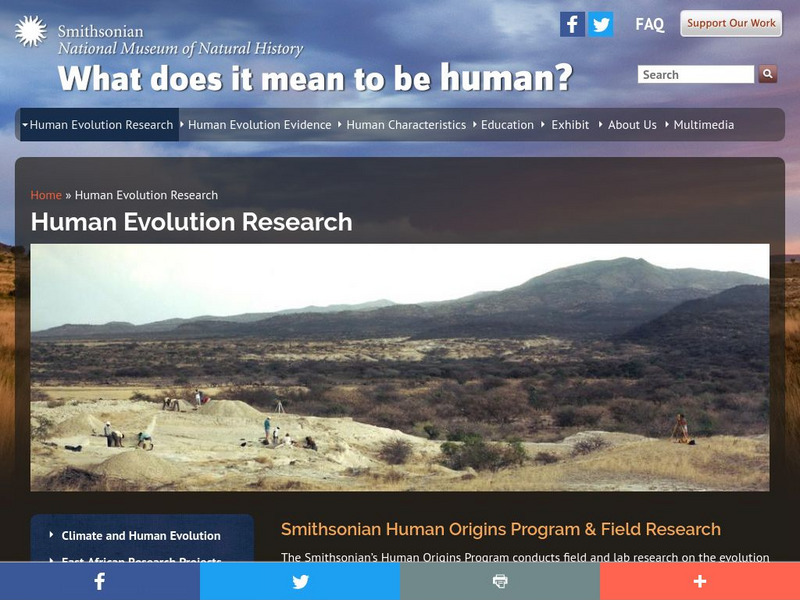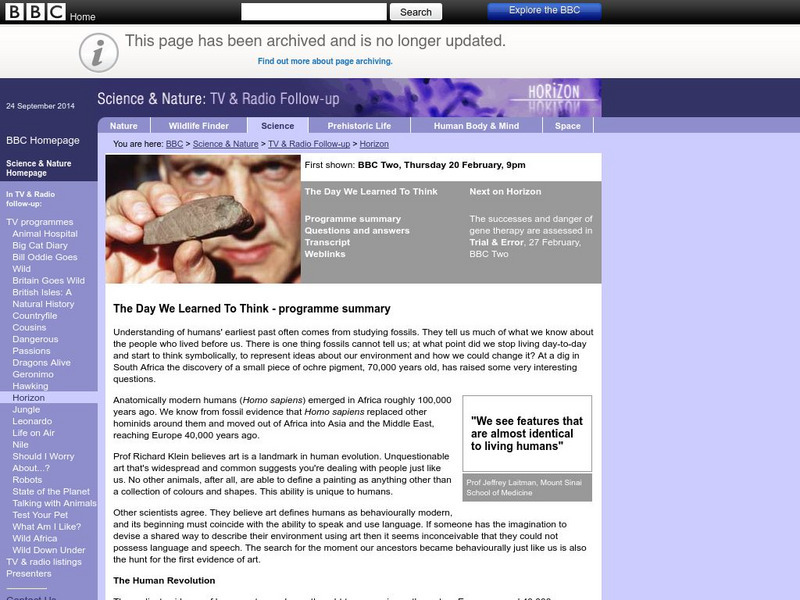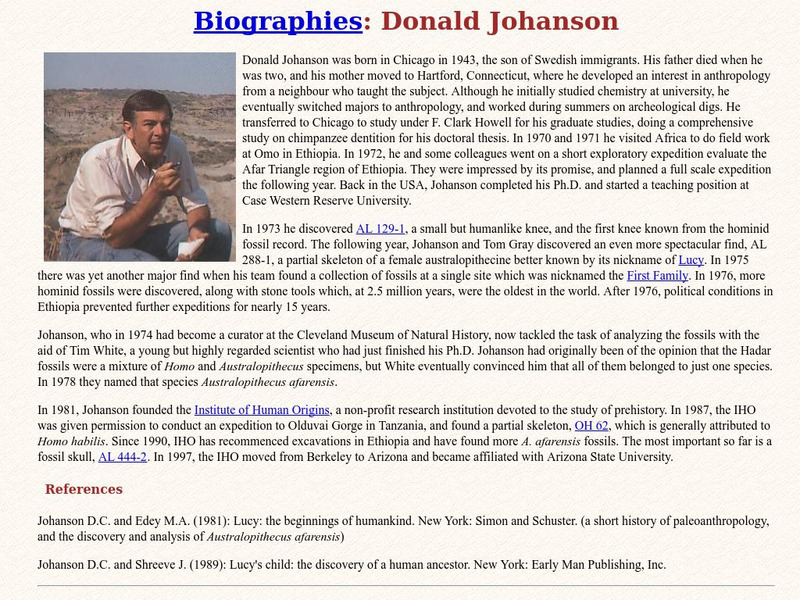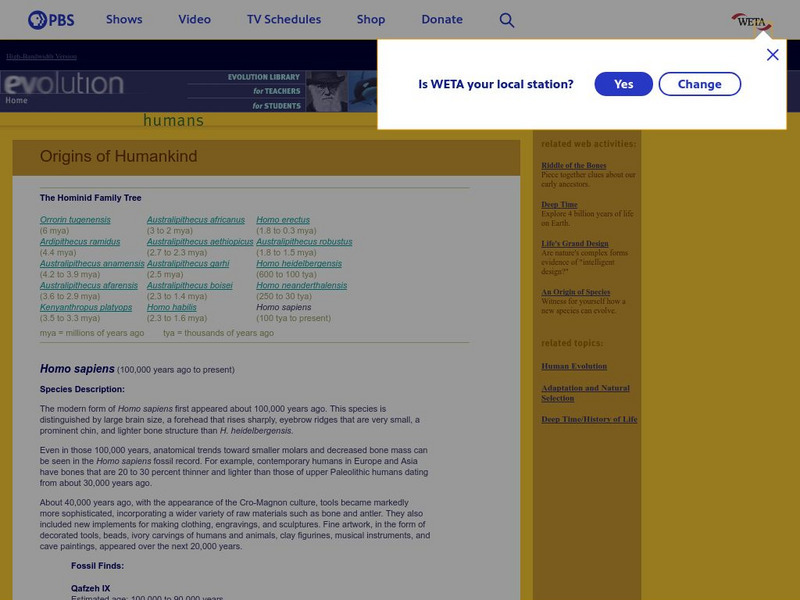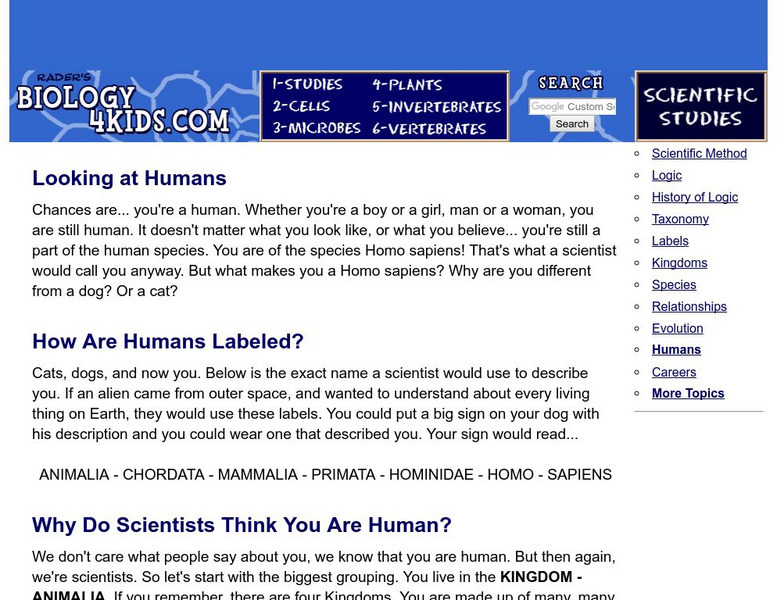Big History Project
Human Migration Patterns
Humans have been on the move for millennia. Using an article from The Smithsonian, pupils chart human movement before written history on a world map. In addition, they examine the modes of transportation used by different waves of human...
Curated OER
Investigating Our Past: Where Did Humans Come From?
Investigate the theories of human evolution. In this research based lesson, learners research and discuss how geographic isolation, interbreeding, generalization, and specialization are factors in the history of humans. Groups work...
Curated OER
The Origin of Humans
Where did human beings come from? How did they settle into communities and civilizations? Your class will find the answers in this fascinating presentation, which takes the viewer through the stages of mankind, from the primitive...
Curated OER
Roots: The Ancestry of Modern People
High schoolers investigate the models for the origin of modern humans and the conditions that facilitate speciation and evolution. The classification and nomenclature of hominid species is also examined.
Curated OER
Neanderthals
Students study Neanderthals. In this Prehistoric life lesson plan, students investigate two main theories regarding the relationship between Neanderthals and modern man. Students will conduct research through several provided web sites...
Curated OER
What is Classification?
In this classification instructional activity, students describe the difference between Homo erectus and Homo sapiens. Then they define taxonomy and explain what was wrong with Aristotle's method of classification. Students also describe...
American Institute of Biological Sciences
Action Bioscience: Origins of Modern Humans: Multiregional or Out of Africa
Two migration theories are on the table for consideration. Weigh the evidence of each one in this article by Donald Johanson of Lucy fame.
Other
Becoming Human: Evolution and Human Uniqueness
This is Chapter One from "Becoming Human: Evolution and Human Uniqueness," by Ian Tattersall. This chapter presents recent findings about the art and artifacts of early humans, and what those artifacts tell us about the intellectual...
Science Daily
Science Daily: The Oldest Homo Sapiens
The oldest fossils of modern humans (Homo Sapiens) found near Omo Kibish, Ethiopia, have been identified as being approximately 196,000 years old. This article points out the amazing significance of these findings.
Smithsonian Institution
National Museum of Natural History: The Origin of the Genus Homo
The evolution of the Genus Homo is neatly laid out in a chronological fashion beginning with the key change that signaled the origin of Homo, through the evolutionary forms, finalizing with Homo sapiens.
Other
Big History Project: Chapter 4: Humans
Big History Project takes a comprhensive look at humans. From evolution to migration, agriculture to complex civilizations, students and teachers will be intrigued by this interactive learning module.
Smithsonian Institution
National Museum of Natural History: What Does It Mean to Be Human: Human Evolution Research
Research continues to discover evidence left behind by prehistoric man. Discover the climate effects on human evolution and explore how the adaptable survived. The Asian and East African Research Projects in Kenya are described. You,...
Smithsonian Institution
National Museum of Natural History: What Does It Mean to Be Human, Human Characteristics
Explore walking upright, tools and food, bodies, brains, social life, language and how humans ultimately changed the world. Excellent charts, pictures and videos accompany easy-to-understand text on the earliest humans.
BBC
Bbc: Science and Nature: The Day We Learned to Think
A summary of BBC program entitled, "The Day We Learned to Think." Offers a brief look at man's first works of art, early ability to speak, and evolution of intelligence. Offers questions and answers, a program transcript, and various...
Talk Origins Archive
Talkorigins: Biography: Donald Johanson
A biography of Donald Johanson, an anthropologist who has discovered many homo erectus skeletons.
Palomar Community College District
Palomar College: Flashcards: Early Modern Homo Sapiens
A set of eleven flashcards featuring facts about the early humans.
PBS
Pbs: Evolution: Origins of Humankind: Homo Sapiens
Read a description of Homo sapiens as a species, learn about the variety of Homo sapiens fossils that have been found, and discover evidence of the culture of these early people.
Other
Washington State University: Hominid Species Timeline
This complete resource contains a chronological chart that shows the main hominid species and their approximate relationships in time. A description of each hominid is included as well.
McGraw Hill
Glencoe Biology: Hominoids to Hominins: Self Check Quiz
Answer these five multiple-choice questions about human evolution. After answers are submitted, students can review their mistakes.
McGraw Hill
Glencoe Biology: Human Ancestry: Self Check Quiz
A five question, self-checking concept check over human ancestry and evolution.
Biology 4 kids
Biology4 Kids: Looking at Humans
Find out about the human species, and why our physical characteristics set us apart form other species.
A-Z Animals
A Z Animals: Animal Facts: Human (Homo Sapiens)
This entry identifies the defining characteristics of the Homo Sapiens, more commonly known as a human being.
CK-12 Foundation
Ck 12: Biology: Human Population
[Free Registration/Login may be required to access all resource tools.] Overview of early human population growth.
Read Works
Read Works: Survivor
[Free Registration/Login Required] An informational text about the life of Cro-Magnon people. A question sheet is available to help students build skills in reading comprehension.


